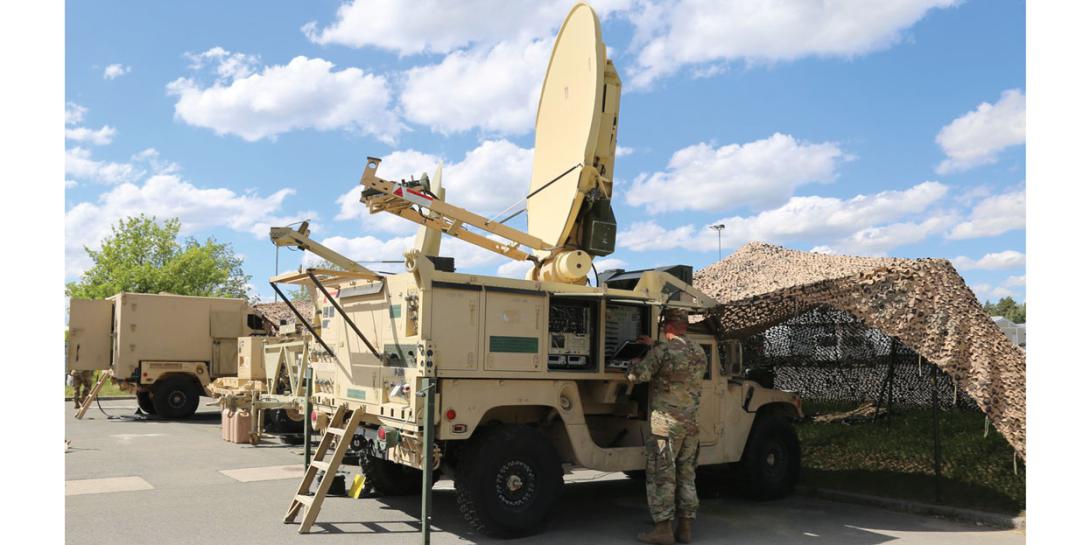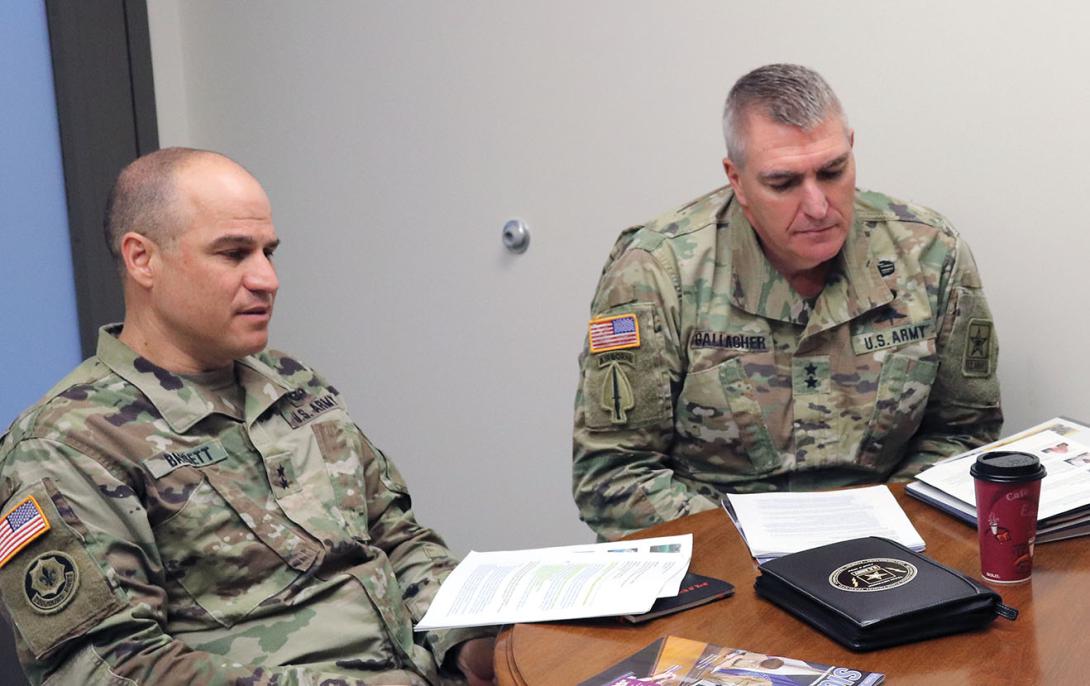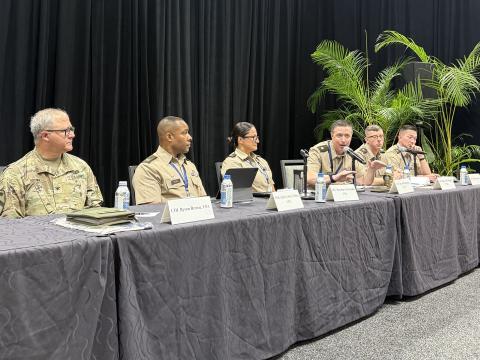Army Strives to Speed Advancements to Warfighters
U.S. Army leaders are sloughing off some of the old ways of fielding technology and embracing commercial and government advances in tactical communications. Facing a technology revolution, dangerous adversaries and budgetary constraints, leaders are working to get capabilities into the hands of warfighters faster.
It is an iterative process that determines the right amount of risk, capabilities and testing to justify rapid deployment, Army leaders say. “In the past, we would say we wanted mathematical certainty before we put something into production,” says Maj. Gen. David Bassett, USA, program executive officer for Command, Control, Communications-Tactical (PEO C3T). “I think now we are bringing in a new model that says, ‘What is the risk if we put it into place with less than that mathematical certainty but with the right set of controls to make sure that we are fielding a capability to a soldier that, one, is better than what they have today and, two, is safe, suitable and effective for use?’ I think you are seeing that play out in our willingness to take on emerging capabilities and really understand what they can and can’t do.”
The implementation of this new process is reshaping Army culture. “It is really to cycle faster through focused integration and, really, disciplined innovation,” explains Maj. Gen. Peter Gallagher, USA, director of the command, control, communications and intelligence (C3I) cross-functional team (CFT).
Gen. Bassett adds, “What we are saying is maybe we can do it in a different way, accept a different balance of risk and drive a cultural change. And that is going to take teamwork across the entire set of stakeholders.”
Part of this effort means harnessing some of the CFTs—including Gen. Gallagher’s—that Acting Army Secretary Ryan McCarthy and Chief of Staff Gen. Mark Milley, USA, established last October to shoulder implementation of Army modernization priorities. In addition to working closely with several other program executive offices, Gen. Bassett is coordinating with Gen. Gallagher and the C3I CFT on what to field to meet integrated tactical communication needs. The C3I CFT solves for what to acquire, and the PEO C3T answers how the acquisition system will deliver the technology needs “based on the CFT’s priorities, the [chief of staff’s] priorities—and do so in a way that allows us to deliver much quicker than we have done in the past,” Gen. Bassett says. “Gen. Gallagher and the CFTs are really doing the experimentation that helps us drive what the Army is going to be doing across the network space. He is, for me, a really empowered user that can help drive consensus.”
Members of the PEO C3T are embedded with the C3I CFT team, Gen. Gallagher says, along with a range of warfighters and civilians of various expertise, providing “truly a cross-functional team.” They are all working to “move the Army as an institution at a faster pace between the requirements community, the acquisition community and the resource community to just cycle faster,” he states. “There is a lot of talk about agile acquisition, but there also is a requirement to do agile contracting, agile testing, agile risk management frameworks to turn things faster. So I think that the collective energy of what we bring, with the expertise that Gen. Bassett and his team provide, helps us do that.”
Gen. Bassett refers to it as a DevOps—development and operations—kind of model. Instead of testing technologies exhaustively as the Army previously did, the service is working with the CFTs, the PEO C3T and other warfighters, “testing it enough” to show certain capabilities, then getting soldier input, Gen. Bassett says. “That kind of feedback loop and that link between development and operational input from the field [is important],” he says. “This DevOps model makes it possible to make those changes quicker.”
However, the new process demands some changes, not only from the PEO C3T but also from stakeholders. It means changing testing, logistics and materiel release, how the PEO C3T writes requirements and how the office does development, Gen. Bassett stresses. It also means “a different relationship with the industry and, in some cases, about who is going to pay for development, whether we are going to leverage finished capabilities, or when are we willing to put Army dollars on the table to pay for development,” he states.
The PEO C3T has to find the right balance between available technologies and advanced technologies while trying to streamline a rigid Army process. “If the expectation is that we are going to dot every i and cross every t, it is not going to be a whole lot faster than what we are doing today,” Gen. Bassett asserts. “It’s about picking the right subset of things so we can get enough information for Army decision makers to make good decisions about those capabilities.”
Gen. Gallagher suggests that it is ultimately about balancing risk. “We want to tee up capabilities and limitations for senior leaders so that they understand if it is better than what we have. And if it is worth investing in, does the gain outweigh the risk?” he asks.
The Army stood up the C3I CFT last November and announced CFT locations in May. Part of that means moving C3I CFT operations from Fort Belvoir, Virginia, to Aberdeen Proving Ground (APG), Maryland. Co-locating to APG “with PEO C3T and the whole C4ISR community” will strengthen the process, Gen. Gallagher explains. “That pivot of where we establish ourselves as a cross-functional team I think is just going to make the relationship that much better, not just with PEO C3T but with their counterparts,” he says.
Warfighter exercises, which provide operational assessment data, also are playing a key role. This spring, the PEO C3T and the C3I CFT tested mission command systems and other aspects of an integrated tactical network at two events: one in the United States and another in Germany with a battalion from the 82nd Airborne Division.
“At these events, we saw the results of being able to leverage mature commercial technology, improving our interoperability and greatly improving the flow of information across those units,” Gen. Bassett says. “The big [comment] that we got at the end of it was, ‘Please don’t take it away. We want to keep it.’ And we are trying to figure out how to do that.”
Gen. Gallagher agrees that the technology was favorably received. “This was the first time that I have ever been to one of those after-action reports where the first thing they did was compliment the communicators,” he says, laughing. “It actually happened. So I think that speaks volumes to the fact that the team delivered a capability, and they were gaining feedback on this DevOps model and getting the soldier and leader feedback and making the adjustments.”
The generals plan to expand the work this fall in Europe with another battalion from the 82nd, an element of the 2nd Stryker Cavalry Regiment, a battalion from the 173rd and a Special Forces group. Some United Kingdom teammates also are joining them on the Network Integration Evaluation (NIE) 18.2 exercise, Gen. Gallagher notes.
“As we get ready for NIE, the adjustments made from the 18th Airborne Corps Warfighter—and what they learned from the Joint Warfighting Assessment—all this is kind of evolving and iterating. That is what we really want to get to instead of locking down configurations and going through this monolithic testing that costs millions and millions and millions,” Gen. Gallagher says. “And that approach, if we can cycle and iterate as we go, with soldier and leader feedback, I think it sets the stage for capabilities that truly meet the operational needs of the warfighter.”
Gen. Bassett stresses that while the Army has always gotten feedback from soldiers, it has not been “anywhere near on that scale and not as far into the development cycle as we are now allowing it to proceed.” He admits that “there is some tension there” in the face of existing conventional testing approaches, but he ventures that the Army is better off allowing the early feedback.
“Isn’t some data sooner better than comprehensive data later, when it comes to cycling faster and providing deliverability?” Gen. Bassett asks. “I think we are just starting to scratch the surface on what might be possible.”
In addition, visits with industry have been productive, Gen. Gallagher says. The Army held technical exchange meetings with companies last month and in January. The most recent meeting in Seattle was “to see what is in the art of the possible for cloud in a distributed mission command environment,” Gen. Gallagher notes.
The PEO C3T is especially looking forward to the promise of artificial intelligence, machine learning and autonomous systems, Gen. Bassett says. “I am also really optimistic about how we can take things like artificial intelligence to our mission command systems. [There] we can begin to take functionality that today is performed manually by a soldier and then automate that in a way that takes that task off of a soldier and makes those operators that much more efficient,” he says. “Technology is moving so fast. It is a different balance of risk and opportunity where we can put equipment in the hands of soldiers faster, drive Army decision making faster and keep up better with that technology cycle.”





Comments